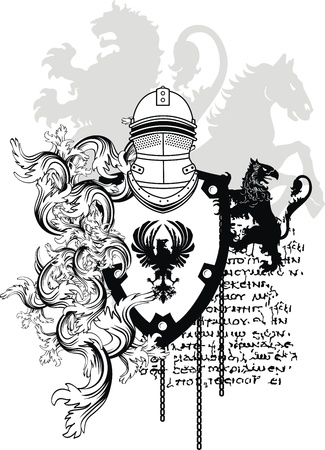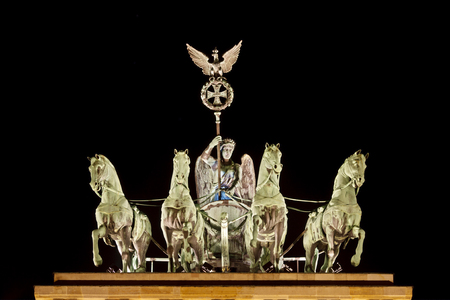1. Origins of the Celtic Zodiac
The Celtic zodiac systems, steeped in myth and legend, trace their origins to the ancient cultures of the British Isles, particularly among the tribes of what is now Ireland, Scotland, and Wales. Unlike the well-known classical zodiac, the Celtic approach to astrology is rooted in a deep reverence for nature, seasonal cycles, and ancestral lore. Historical evidence suggests that the Celts observed the heavens and natural world with acute attention, weaving these observations into symbolic frameworks that guided both communal life and individual identity. The calendar systems used by the Celts—such as the Coligny calendar—reflect a sophisticated understanding of lunar and solar rhythms, which were integral to agricultural practices, religious festivals, and social structure. In this context, the emergence of zodiac-like systems was less about fortune-telling and more about aligning human existence with the broader patterns seen in nature. Over centuries, these beliefs evolved through oral tradition and local adaptation, giving rise to regional variations across the British Isles. The resulting Celtic zodiac systems are thus best understood not as rigid astrological charts but as living cultural artefacts—a fusion of mythic storytelling, ecological awareness, and community memory that shaped daily life and spiritual worldview throughout Celtic history.
2. Symbols and Mythological Creatures
The Celtic zodiac is a unique system, interwoven with the natural world and the legendary folklore of the British Isles. Unlike the familiar Western zodiac based on planetary constellations, the Celtic approach draws its power from animals, trees, and mythical beings, each chosen for their resonance within ancient Celtic society. These symbols are far more than mere tokens; they reflect deep-rooted beliefs about nature, personality, and fate.
Animals in the Celtic Zodiac
Animals held profound spiritual significance for the Celts. Each creature represented certain virtues or challenges, and was believed to guide those born under its sign. The table below outlines some key animals featured in various interpretations of the Celtic zodiac:
| Animal | Associated Traits | Symbolic Meaning |
|---|---|---|
| Stag (Deer) | Pride, independence, leadership | Nobility and renewal; associated with forest deities |
| Salmon | Wisdom, intuition, knowledge | Linked to inspiration and prophecy; central in many myths |
| Hawk/Falcon | Vision, focus, decisiveness | Messengers between worlds; clarity of sight |
| Boar | Courage, strength, ferocity | A symbol of war and protection; revered in warrior culture |
| Swan | Grace, transformation, purity | Emblematic of love and otherworldly journeys |
| Horse | Freedom, stamina, travel | Sacred to Epona; bridges earthly and spiritual realms |
Trees: The Ogham Alphabet and Birth Signs
Trees were central to Celtic spirituality. Many versions of the Celtic zodiac align birth dates with sacred trees from the Ogham alphabet—a symbolic script used by Druids. Each tree species carries unique mythological associations:
| Tree | Zodiac Period (approx.) | Cultural Significance |
|---|---|---|
| Birch (Beith) | 24 Dec – 20 Jan | New beginnings; purification and renewal after winter solstice |
| Ash (Nion) | 18 Feb – 17 Mar | Bonds between worlds; source of magical knowledge in mythic tales |
| Oak (Duir) | 10 Jun – 7 Jul | Strength and endurance; revered as the “King of Trees” among Druids |
| Ivy (Gort) | 30 Sep – 27 Oct | Toughness through adversity; symbolises persistence and growth in dark times |
Legendary Beings and Their Influence
The Celtic zodiac also references legendary creatures—beings from myth that embody the mysterious forces shaping human destiny. Notable examples include:
- Pooka: A mischievous shapeshifter able to bring fortune or chaos.
- The Morrigan: A goddess often depicted as a crow or raven, presiding over fate, war, and transformation.
- Cernunnos: The horned god associated with wild animals and fertility—often invoked for his connection to both life and death cycles.
The Interplay of Symbolism
This rich tapestry of animal guides, sacred trees, and legendary beings exemplifies how the Celts viewed themselves as part of a living landscape imbued with spiritual meaning. Each zodiac sign is not merely an emblem but a reminder of one’s relationship with nature and myth—the foundation of identity in ancient Celtic culture.

3. Structure and Calendar Systems
The structure of Celtic zodiac systems is intimately tied to the rhythms of nature, particularly the lunar calendar and seasonal cycles that shaped ancient Celtic life. Unlike the solar-based zodiac familiar across much of Europe, the Celtic approach often draws upon lunar months and natural phenomena. This section explores how these alignments manifest in both tree and animal-based zodiac systems, highlighting their distinct cultural significance and practical implications.
Lunar Foundations of the Celtic Zodiac
Central to many interpretations of the Celtic zodiac is the lunar calendar. The ancient Celts are believed to have divided the year into thirteen lunar months, each closely aligned with a specific phase of the moon and corresponding natural events. This structure stands in contrast to the twelve-month solar calendar commonly used today. For example, in the tree-based system popularised by Robert Graves’ “The White Goddess,” each month is linked to a particular tree—such as Birch for new beginnings or Oak for strength—reflecting not only the time of year but also qualities observed in those born under each sign.
Tree-Based System: Symbolism and Timekeeping
The tree-based system is arguably the most recognised form of the Celtic zodiac within contemporary British culture, though it remains a subject of debate among historians. Each tree symbolises traits and is associated with certain periods within the lunar cycle. These trees were not chosen arbitrarily; rather, their natural cycles—flowering, fruiting, leaf-fall—coincide with key points in the agricultural year, reinforcing both mythic symbolism and practical timekeeping.
Animal-Based System: Seasonal Cycles and Local Fauna
Less widespread but equally intriguing are animal-based zodiacs found in some strands of Celtic folklore. These systems link periods of the year with animals prominent in local environments or mythologies—for instance, Stag, Salmon, or Hawk. Rather than strictly following lunar months, these signs often map onto broader seasonal changes, echoing patterns of migration, breeding, or hibernation observed in nature. Such associations provided guidance for hunting, farming, or ritual activities throughout the yearly cycle.
Comparative Analysis: Trees versus Animals
When comparing tree and animal-based systems, both approaches reflect a profound connection between celestial cycles and earthly experience. The tree system’s alignment with lunar phases foregrounds a more precise method of marking time—a necessity for early agricultural societies in Britain and Ireland. In contrast, animal zodiacs tend to be more flexible, adapting to regional variations in wildlife and climate. While modern interpretations sometimes blend these traditions for symbolic richness, it is important to recognise their distinct historical roots and functions within Celtic society.
In summary, whether through arboreal or zoological symbols, the structure of Celtic zodiac systems demonstrates an enduring respect for cyclical change—a theme echoed in British folklore even today. By situating their calendars within observable patterns in nature, the Celts crafted a mythology that was not only spiritually resonant but also intricately woven into daily life.
4. Legend and Folklore
The Celtic zodiac, while rooted in ancient myth and speculative reconstructions, continues to inspire a wealth of traditional stories and folk beliefs across the British Isles. Unlike the more systematised Western zodiac, the Celtic system is strongly tied to local legend and seasonal cycles, with each sign linked to specific trees, animals, and mythic figures that feature in regional folklore. Communities from Scotland to Cornwall have woven these signs into their oral traditions, often adapting tales to suit local landscapes and cultural identities.
In many rural areas, particularly in Wales and Ireland, people once attributed personal traits or destinies to the tree or animal associated with their birth period. These attributions were passed down through generations, sometimes used to explain quirks of personality or even predict auspicious times for planting and harvest. The rich interplay between nature and myth is a defining feature of Celtic folk belief.
Regional Variations in Celtic Zodiac Folklore
| Region | Common Zodiac Symbols | Local Interpretations |
|---|---|---|
| Scotland | Rowan, Alder, Stag | Often linked to protective spirits and ancestral guardians; legends tell of rowan trees warding off evil. |
| Cornwall | Oak, Salmon | The oak is revered for strength; salmon symbolises wisdom—both appear in tales of Cornish giants and heroes. |
| Wales | Birch, Fox | Birch represents renewal; foxes are seen as cunning guides—featured in Mabinogion-related stories. |
Traditional Stories and Community Identity
Storytelling sessions at village gatherings or pubs frequently include references to local zodiac signs—such as the Oak King versus Holly King during solstice celebrations. These narratives reinforce community bonds and serve as a living link to the past. In some English counties bordering Wales, unique hybrid versions of Celtic zodiac tales blend Saxon elements with Brythonic lore, showing the adaptability of these traditions.
Cultural Continuity Today
While modern British culture is less dependent on folk astrology for everyday decisions, interest in the Celtic zodiac persists in annual festivals, educational programmes, and even local crafts. Whether recited by storytellers or featured in artisan goods at regional markets, the enduring appeal of these legends keeps them relevant in contemporary British life.
5. Historical Interpretation and Modern Revival
In recent decades, both scholars and enthusiasts across Britain have revisited the idea of the Celtic zodiac, seeking to unravel its historical roots while also breathing new life into its mythic structure. Academic research has tended to approach the subject with a healthy degree of scepticism; many historians highlight the lack of direct evidence for a formalised Celtic zodiac system in pre-Christian times. Instead, they often point to later medieval sources or 20th-century interpretations—particularly those popularised by writers like Robert Graves—as the origin of much of what we now consider Celtic astrology.
Despite this academic caution, there has been a notable revival in interest, especially among those fascinated by Celtic spirituality and alternative forms of self-understanding. Enthusiasts in Britain have reconstructed the zodiac using combinations of ancient tree lore (such as the Ogham alphabet), folk tales, and reconstructed seasonal calendars. This modern reinterpretation is not without controversy, as some argue it blurs the line between authentic tradition and imaginative reinvention.
Workshops, festivals, and online communities dedicated to exploring Celtic traditions often feature discussions about the zodiacs symbolic meanings. These forums serve as crucibles for new ideas: people share personal experiences, reinterpret old myths, and adapt historical material for contemporary relevance. The process is both creative and reflective—balancing respect for scholarship with a desire for spiritual connection.
Interestingly, British interpretations of the Celtic zodiac sometimes emphasise local flora and landscape features unique to regions such as Wales, Scotland, or Cornwall. This regional focus allows people to ground the abstract symbolism of the zodiac in their immediate environment, making it more tangible and meaningful in daily life.
The modern revival also intersects with broader movements in British society that seek to reclaim or reinvent indigenous identities. For many, engaging with reconstructed zodiacs is less about historical accuracy and more about forging a sense of continuity with the distant past—a way to root contemporary identity in mythic soil.
While debates about authenticity persist, it is clear that the Celtic zodiac continues to inspire both scholarly debate and grassroots creativity throughout Britain. Whether as a tool for reflection or a bridge to ancestral heritage, its ongoing reinterpretation underscores the enduring power of myth within British cultural life.
6. Celtic Zodiac in Modern British Life
Today, the Celtic zodiac continues to cast a subtle yet persistent influence across modern British life. While few people consult the Celtic zodiac with the same regularity as their star sign in a daily newspaper, its motifs and symbolism are unmistakably woven into contemporary art, spirituality, and cultural expressions throughout the UK.
Artistic Revivals and Creative Expression
Celtic motifs—especially those derived from zodiac animals and trees—are frequently found in British visual arts, jewellery design, and even fashion. Many local artists draw inspiration from these ancient symbols, integrating knotwork patterns or animal forms associated with particular zodiac signs into their work. Galleries in Scotland, Wales, Cornwall, and Ireland regularly feature pieces that reinterpret these age-old themes for today’s audiences.
Spirituality and Personal Identity
Within modern spiritual practices, especially those connected to neo-paganism and druidry, the Celtic zodiac offers a framework for personal reflection and seasonal celebration. Rituals marking solstices or equinoxes often reference the tree or animal sign attributed to that time of year. Some individuals identify strongly with their Celtic zodiac sign as a means of connecting with their perceived ancestral roots or expressing affinity with Britain’s landscape and wildlife.
Integration into Everyday Culture
The presence of Celtic zodiac imagery is not limited to niche circles; it appears in mainstream contexts as well. From public art installations to souvenir shops selling mugs or calendars adorned with zodiac trees or animals, these motifs have become part of the wider British aesthetic. Local festivals sometimes incorporate references to the Celtic calendar or its symbols, helping maintain a living connection to regional heritage.
Contemporary Reflection
In summary, while the Celtic zodiac no longer functions as an official system for guiding lives or dictating fate, it remains a vibrant source of inspiration and identity within British culture. Its enduring appeal lies in its capacity to bridge mythic past and present-day creativity, inviting both residents and visitors to engage with Britain’s layered history through symbol and story.


